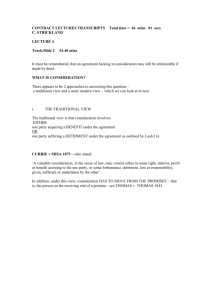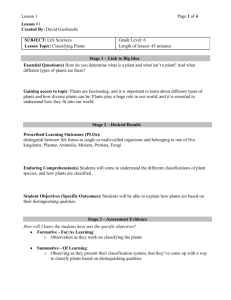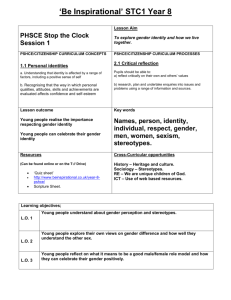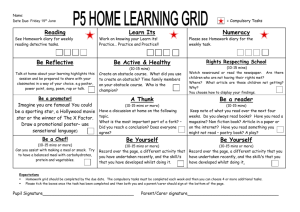BANISH BORING WORDS TIW
advertisement
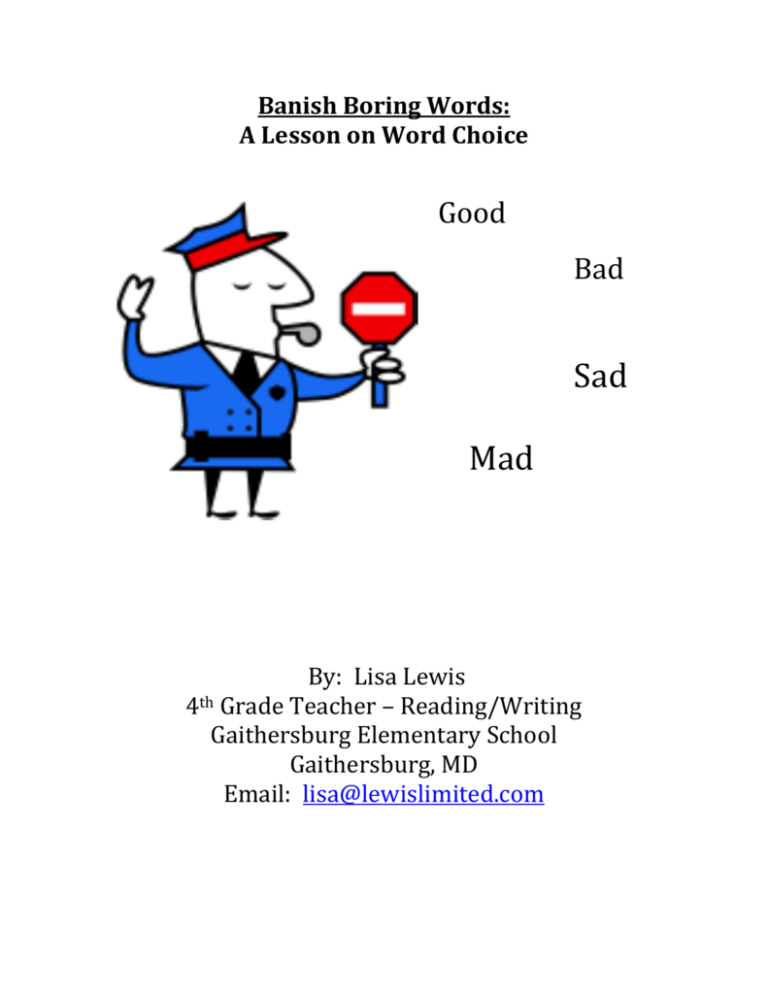
Banish Boring Words: A Lesson on Word Choice Good Bad Sad Mad By: Lisa Lewis 4th Grade Teacher – Reading/Writing Gaithersburg Elementary School Gaithersburg, MD Email: lisa@lewislimited.com Background Teaching writing to underperforming, Title I, and highly unmotivated students has been one of my biggest challenges as a teacher in the Montgomery County Public School system. I have been teaching 3rd and 4th graders at Gaithersburg Elementary School (GES) for 6 years. Gaithersburg’s population is extremely diverse: 54.3% of our students are Hispanic and 28.1% of our students are African American. 40% of our 530 students are considered ESOL students; and 68.1% of our students receive Free and Reduced Meals. We also have a rather high mobility rate at GES – 31% of our students enroll and/or withdraw during a given school calendar year. I have always felt a passion about the teaching of writing as far back as I can remember. Not only do I love to teach students to write, I personally love to compose as well. As I witnessed over the past 6 years, writing tends to be put on the back burner for many schools, as well as principals and teachers, because of the lack of knowledge of how it should be taught. Many people do not feel that writing is nearly as important as Reading or Math. Set state and county curricula often either don’t meet the needs of the students, or teach writing from a whole different prescribed perspective, one that is so far from where I believe it should be. The MCPS 4th grade curriculum addresses “feeling” words vs. character traits as a small part of what needs to be explored with students. I have found that students: 1) have a difficult time distinguishing between “feeling” words and character traits; 2) tend to choose the basic and simplistic words such as “good, bad, sad and mad”; and 3) are entirely unmotivated to learn synonyms for these words and use them in their everyday writing. In my writing classes I have strived to offer students several things to motivate and inspire them to be writers in my classroom. One of my strategies is to be sure that every student is writing in a journal daily. Using a prompt they are given, or perhaps one that another student has given them, students write for 10 minutes daily and have the opportunity to share their writing with their peers. They also explore many “hands on” experiential writing styles, such as personal narrative writing, mystery writing, writing of poetry and autobiographical writing to name just a few. Students have the opportunity to write among the different genres through the prescribed curriculum that serves as our guide. Why? This workshop was developed to aid in helping me conquer some of the most difficult ideas that I want and need to get across to my students. 1. How do I get them to understand the difference between a character trait and a feeling? 2. How do I get them to understand that “word choice” for the basic and simplistic “feeling” words is a crucial part of their writing? 3. How do I motivate my students to continue to contemplate their “word choice” on a daily basis? Workshop Activities 1. Background and introduction of workshop (2-3 mins) Give background information about what brought me to inquire about this topic. 2. What is a “feeling”? (group discussion – 5 mins) How would we collectively define a “feeling” without using the word “feel” or “feeling” in the definition. (See attached dictionary definitions) 3. Word/smiley face/color spectrum matching game (5 mins) Using word cards, smiley face cards and color spectrum, match up one feeling word with a smiley face that represents it, and give the word and face a color from the spectrum that might also represent that feeling. 4. Choose one word/face/color spectrum sample and write why you matched them together (5 mins) Choose one trio (word, face, color spectrum card) and write several sentences about why you matched these together. How do the color spectrum samples and faces represent your word?) 5. Share out of writing (5 mins) Students will share why they created their match. 6. Read Today I Feel Silly to group and discuss different feelings mentioned in the book. Have students make connections. Explain that they will use these connections to write and illustrate their own feeling book.(10 mins) 7. Write and illustrate a book telling the story of a time when you experienced very strong feelings. Be sure to use your new feeling words and fill in at least 6 pages. (15 mins) 8. Share (10 mins) 9. Response letter writing (10 mins) Definitions of “feeling” (Emotions) Dictionary.com: . . .a consciousness or vague awareness; an emotion or emotional perception or attitude; capacity for emotion, esp. compassion; a sentiment; attitude; opinion Websters.com: . . .expressing emotion or sensitivity Encyclopedia Brittanica: . . .the perception of events within the body, closely related to emotion Children’s Dictionary . . .to be conscious of a physical or mental state QUOTES: “Emotions,” wrote Aristotle, “are all those feelings that so change men as to affect their judgments, and that are also attended by pain or pleasure.” I love writing. I love the swirl and swing of words as they tangle with human emotions.” By: James A. Michener “Colors, like features, follow the changes of the emotions.” By: Pablo Picasso “The difference between the right word and the almost right word is the difference between lightning and a lightning bug.” By: Mark Twain Detail makes the difference between boring and terrific writing. It’s the difference between a pencil sketch and a lush oil painting. As a writer, words are your paint. Use all the colors. By: Rhys Alexander SAD HAPPY MAD BAD GOOD AFRAID GLAD NICE PLEASANT EXCELLENT UNIQUE FANTASTIC CALM PEACEFUL COMFORTABLE BRAVE RELAXED AWESOME SUPER WONDERFUL AMAZING EXCEPTIONAL PLEASED ANGRY IRATE ENRAGED UPSET BITTER IRRITATED CRABBY GRUMPY GROUCHY FRUSTRATED OUTRAGED DISGUSTED CONTENT PLEASED CHEERFUL JOLLY TICKLED JOYFUL EXCITED SATISFIED BUBBLY TEARFUL PAINED UNHAPPY GLOOMY EMPTY BLUE BLAH DOWN HURT ECSTATIC UPBEAT BEAMING MERRY THRILLED BLISSFUL OVERJOYED JUBILANT ELATED TERRIBLE HORRID CRAPPY LOUSY EVIL DREADFUL CRUMMY TERRIFIED ALARMED SCARED NERVOUS STARTLED FRIGHTENED THREATENED FEARFUL SHAKEN TENSE UNEASY BANISH BORING WORDS SAD tearful pained unhappy mournful empty blue blah down hurt sorry awful depressed dejected disheartened HAPPY tickled elated thrilled delighted ecstatic blissful overjoyed cheerful content pleased upbeat merry jolly joyful BAD awful poor terrible unspeakable horrid crappy lousy evil dreadful crummy defective unsatisfactory unacceptable icky GOOD nice extraordinary pleasant awesome excellent fantastic wonderful peaceful exceptional pleased relaxed fabulous amazing calm AFRAID terrified shocked horrified nervous uneasy alarmed scared frightened fearful shaken worried tense threatened uncomfortable GLAD peaceful content pleased cheerful cozy relaxed satisfied jolly bubbly tickled excited great safe joyful MAD angry irate enraged annoyed upset hateful crabby grumpy disgusted grouchy frustrated bitter outraged fuming

